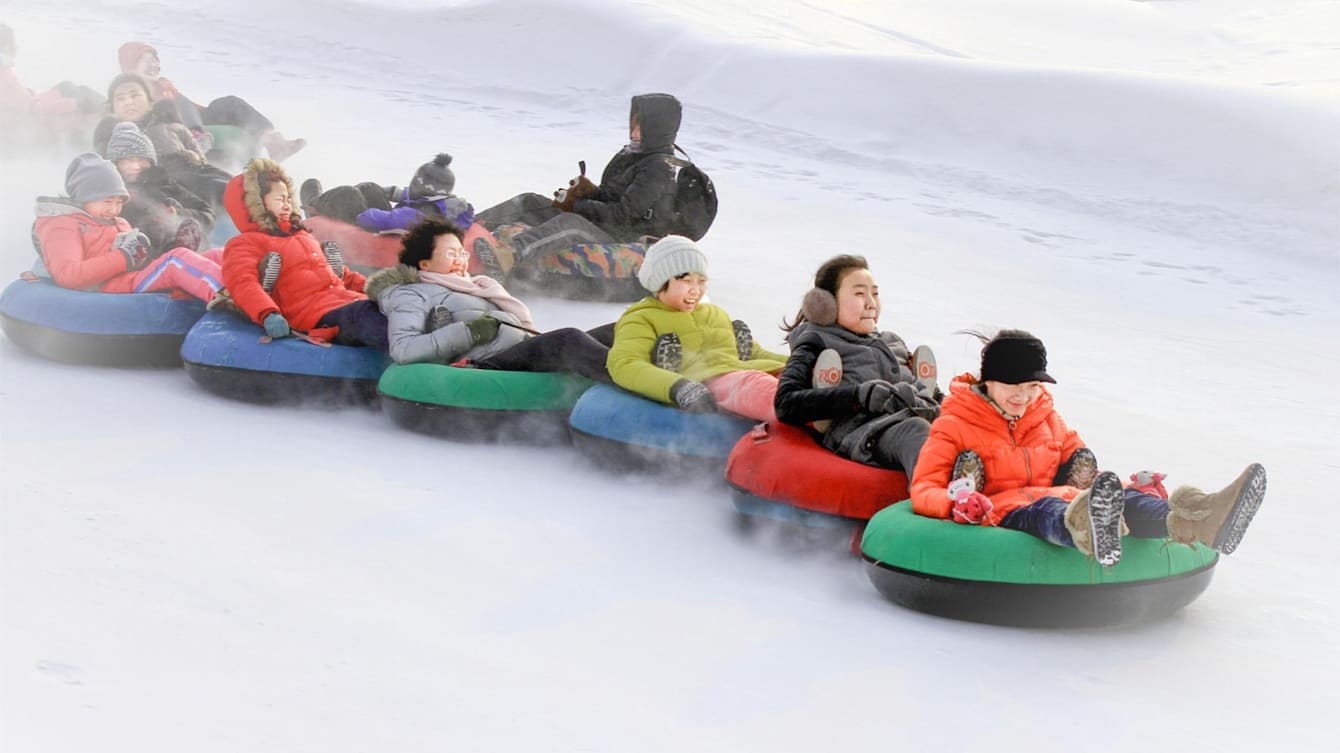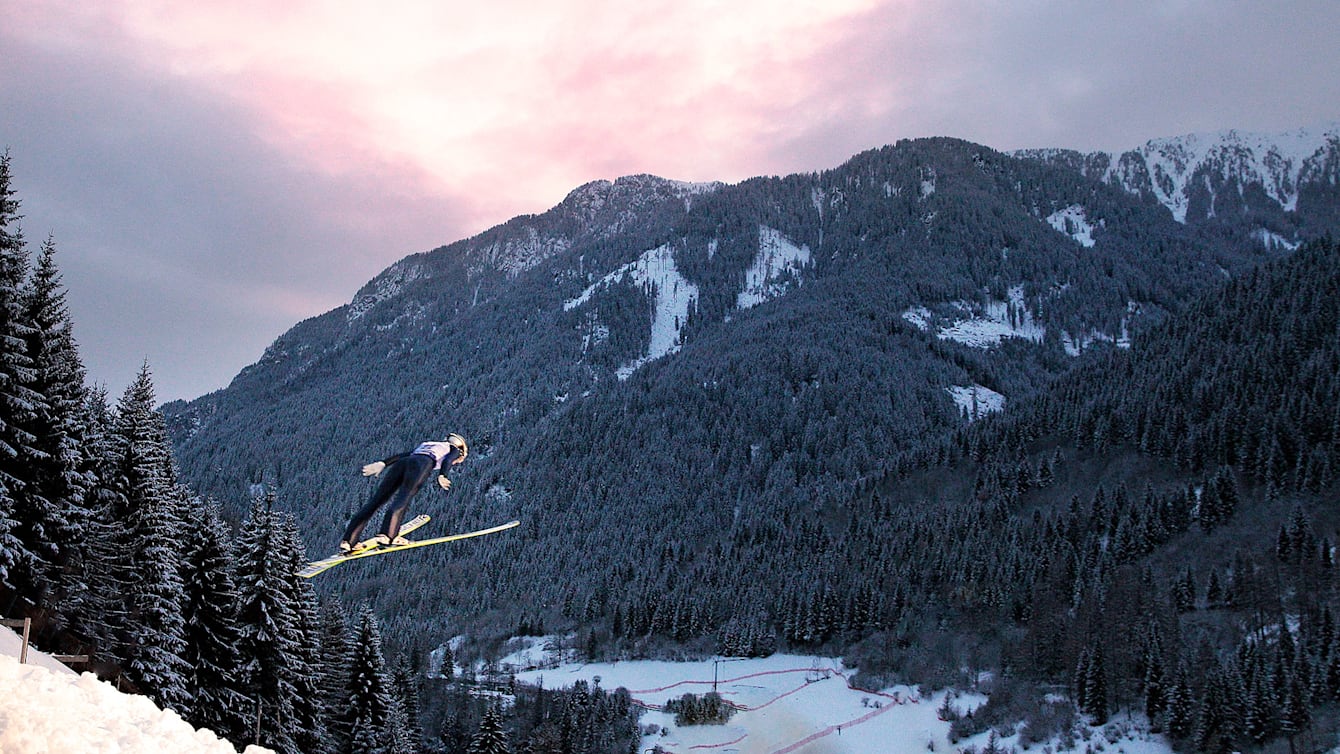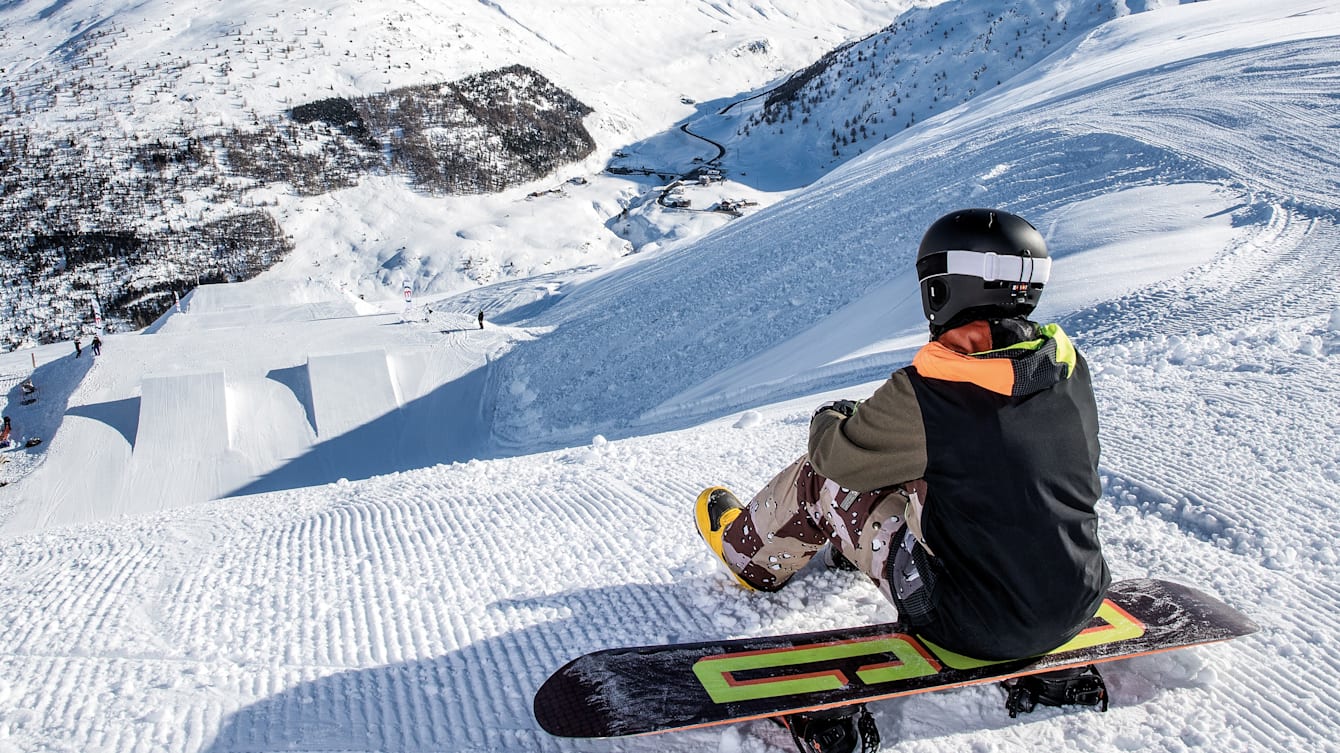100 years Olympic Winter Games – REVISED
100 years of Olympic Winter Games: Legacies of the past Olympic Winter Games
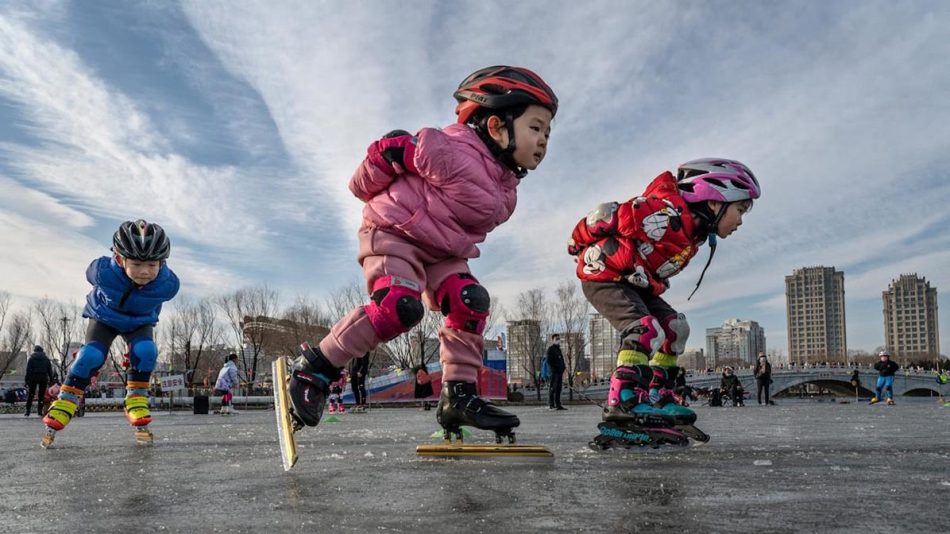
International Olympic Committee
17 January 2024 – Next week marks 100 years since the first Olympic Winter Games took place in Chamonix, France. Ahead of the 100th anniversary, we look into the legacies of the various Olympic Winter Games editions since.
The Olympic Winter Games have created lasting benefits for winter sport, and transformative legacies for their hosts since the first Games in 1924.
- The Games have propelled their hosts – often little-known mountain destinations – onto the world map, bringing tourism and economic benefits.
- For example, Innsbruck 1964 boosted tourism and improved infrastructure in Innsbruck and the Tyrol region. In 2022, Tyrol’s tourism industry directly and indirectly employed 60,000 people and generated around EUR 8.4 billion in turnover. With 32.7 per cent of overnight stays in 2022, Tyrol is the most visited region of the country, according to Austria’s Federal Ministry of Economic Affairs.
- Olympic Winter hosts have used the benefits from the Games as catalysts to transform themselves into four-season resorts.
- For example, Salt Lake City 2002 served as a springboard to establish Utah as one of the world’s premier high-performance and recreational sports destinations. Since 2002, Utah has staged more than 175 international winter sports events. It is now a year-round recreational sports hub and an established training hub for world-class athletes, home to three US sports governing bodies.
- The hosts have also used the Games to create a variety of community benefits for their local inhabitants, such as a more active population and improved social cohesion.
- For example, Vancouver 2010 helped improve education, health and social inclusion. The Games also promoted Indigenous culture, enhanced literacy programmes and inspired sustainable infrastructure. These legacies continue to benefit communities in the region and contribute to the well-being of the population.
- The Olympic Winter Games have contributed to development of winter sports at the national, regional and global level.
- For example, more than 346 million people in China engaged in winter sports as a result of Beijing 2022, which created lasting, wide-ranging social and economic benefits for local people. According to the China Tourism Academy, the country’s winter leisure tourism sector is expected to welcome more than 520 million visitors and earn revenue of more than CNY 720 billion (approx. USD 107 billion) during the 2024-2025 season.
100 years of Olympic Winter Games: Legacies of Chamonix 1924 as the first Olympic Winter Games
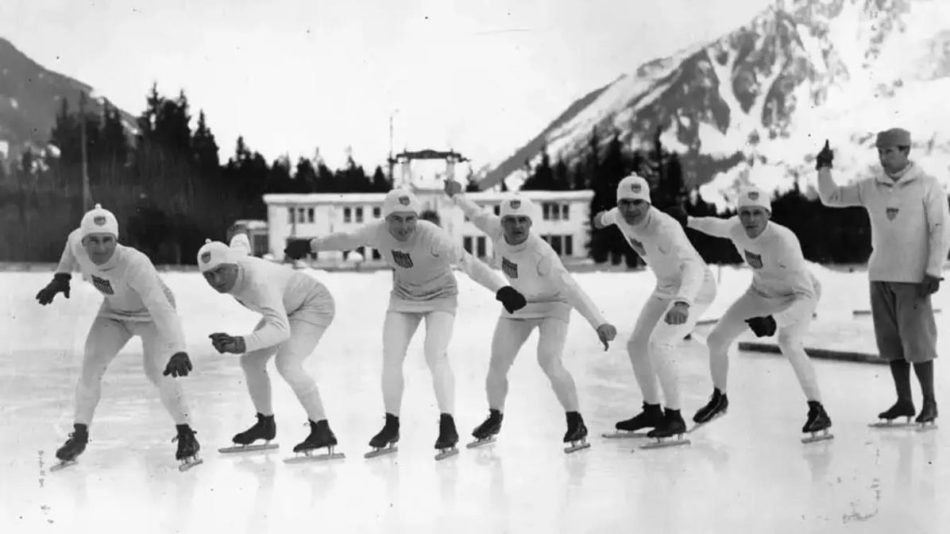

16 January 2024 – Next week marks 100 years since the first Olympic Winter Games took place in Chamonix, France. Ahead of the 100th anniversary, we look into the legacies created by Chamonix 1924 for the host communities and winter sport globally.
Impact on the city and region
- The Games boosted Chamonix’s national and international reputation as a tourism destination, which today has over eight million overnight visitors each year spread equally between the winter and summer seasons.
- The Games also launched Chamonix’s role as a host of major winter and summer sports events, including downhill and slalom world championships, marathons, climbing and more. This includes the World Ski Championships in 1937 and 1962, plus around 20 editions of the Kandahar (Alpine Skiing World Cup) since 1948, with the next one taking place in February 2024.
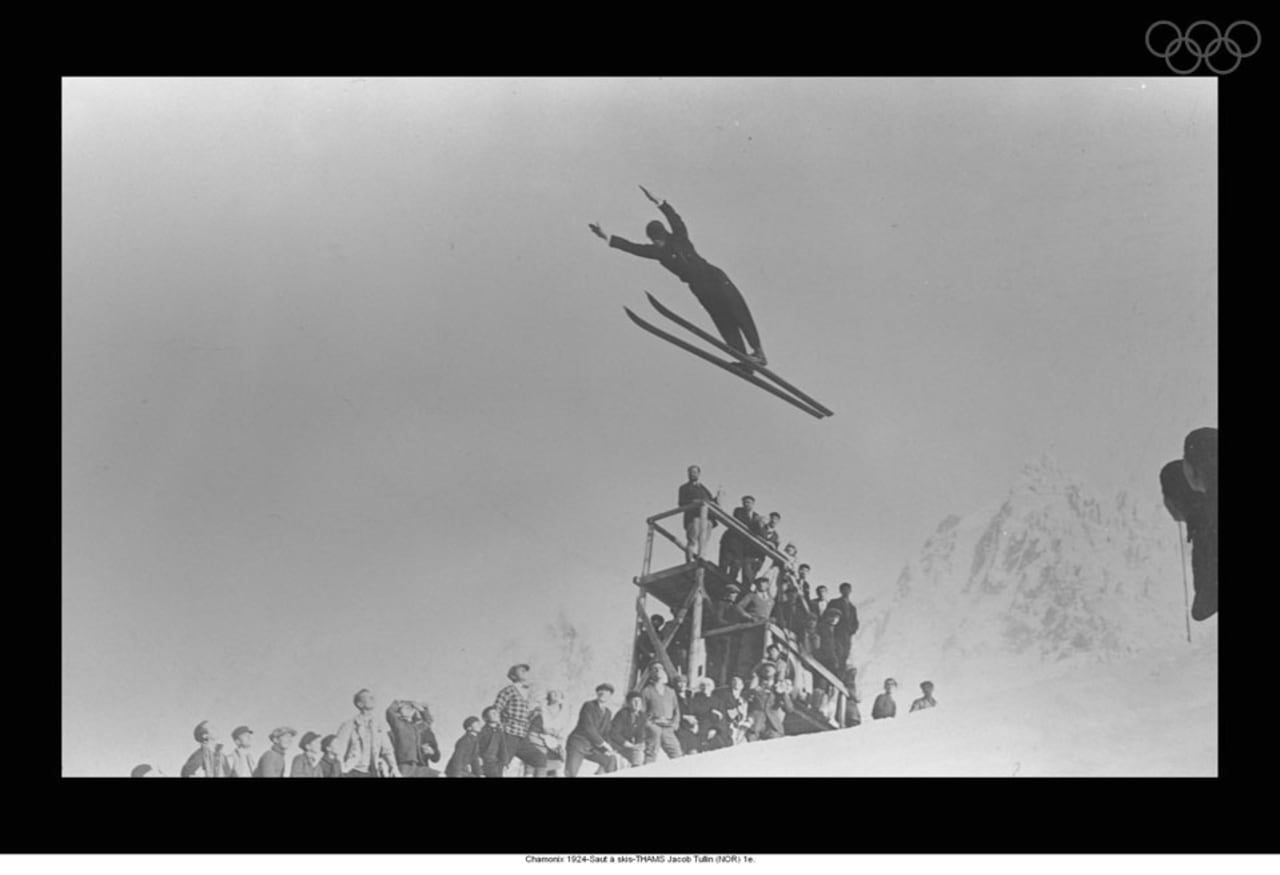
Impact on winter sports
- Chamonix 1924 helped make winter sports – previously considered elitist – more popular and more accessible. The competition proved a great success, attracting 10,004 paying spectators in all, many of them travelling to the resort from across France as news of the event began to spread.
- The Games coincided with the creation of the International Ski Federation (FIS) and the establishment of the French Ski Federation (FFS). Today, the FIS has 135 member nations, hosting more than 7,000 FIS ski and snowboard competitions annually. The FFS helped to create a skiing culture in France and produce champion athletes.


Venue legacy
- Both of Chamonix 1924’s permanent venues are still in use today:
- The Stade Olympique de Chamonix/Patinoire du Bouchet, including two speed skating rinks, plus a swimming pool, squash court, climbing wall, gym, ice rink and athletics track.
- The Tremplin Olympique du Mont ski jumping venue is still used for training, youth events, and national and regional competitions.
- The Stade Olympique de Chamonix/Patinoire du Bouchet, including two speed skating rinks, plus a swimming pool, squash court, climbing wall, gym, ice rink and athletics track.


100 years of Olympic Winter Games: The evolution − reinventing the present, adapting to the future


18 January 2024 – Next week marks 100 years since the first Olympic Winter Games took place in Chamonix, France. Ahead of the anniversary, we think about how their future might look in the face of accelerating climate change.
With the reforms of Olympic Agenda 2020 and Olympic Agenda 2020+5, the IOC has been reinventing the Olympic Games and the Olympic Winter Games to make them more inspiring, relevant and, above all, sustainable, reducing their footprint and creating lasting benefits for host communities.
- Today, the Games must adapt to the hosts, and not the other way around. The IOC encourages sustainable and flexible Games proposals which fit with long-term development plans for the local region and country.
- Hosts should aim to use only existing or temporary venues, and can also move events outside the host city, region or country if appropriate for sustainability reasons. Any new construction must be planned with long-term legacy in mind.
- Sustainability must be part of the DNA of any hosting project. Games organisers must commit to tackling climate change, protect biodiversity and manage resources sustainably.
- From 2030 onwards, Games organisers will be obliged to minimise direct and indirect Games-related carbon emissions, strive to remove more carbon from the atmosphere than the Games project emits, and use their influence to encourage stakeholders to take climate action.
- Proposed snow competition venues should be climate reliable.
Reflecting on the future - As climate change impacts increase, the IOC is leading the way – through research, reflection and innovation – to shape the future of winter sport.
- In 2019 the IOC established two Future Host Commissions, for Summer and Winter editions of the Olympic Games, to monitor and encourage interest in Olympic hosting; and to explore future opportunities and challenges, to ensure resilience for the Olympic Movement and sport. Both Commissions are studying the current and potential future impact of climate change on the organisation of sports events and report to the IOC Executive Board (EB).
- Recent research led by the Future Host Commission for the Olympic Winter Games found that:
- There are currently 15 NOCs on three continents that already have at least 80 per cent of the venues needed for the Olympic Winter Games.
- By mid-century, two of these 15 NOCs will no longer have the necessary reliability for the Olympic Winter Games to be held in February, and five will not for the Paralympic Winter Games to be held in March, which means a pool of potential hosts reduced to around 10 or 13 NOCs.
- While this number will likely be further reduced by the end of the century due to the impact of climate change, under a mid-emissions scenario potential Olympic Winter Games hosts will exist until the late 21st century.
- The IOC Session responded to these findings by approving the principle of a double allocation for the Olympic Winter Games 2030 and 2034 by the IOC Members, should the appropriate conditions exist.
- In November 2023, the IOC EB opened Targeted Dialogues with the French National Olympic Committee (CNOSF) and the US Olympic and Paralympic Committee (USOPC), to explore their potential to host the Olympic Winter Games 2030 in the French Alps, and the Olympic Winter Games 2034 in Salt Lake City-Utah.
- The aim is to elect the hosts for both editions at the 142ndIOC Session in Paris in July 2024, to bring security for the Olympic Movement in solid traditional winter sport and climate-reliable hosts until 2034, while allowing the IOC time to reflect on the long-term future of the Winter Games, including various ideas around the economic and event delivery model.
- The Future Host Commission will report back to the EB on its strategic reflections. Topics under investigation could include: the notion of rotating the Winter Games within a pool of hosts; innovations and new technologies; co-hosting ice and snow events between different regions; and decentralising the organisation of the Olympic Winter Games to outsource certain competitions to experienced international and national event organisers who run world cups and world championships.
100 years of Olympic Winter Games: Legacies of the past, reflections about the future
15 January 2024 – Next week marks 100 years since the first Olympic Winter Games took place in Chamonix, France.


From 25 January to 5 February 1924, 258 athletes from 16 national teams gathered to compete in 16 events in nine disciplines: bobsleigh, cross-country skiing, curling, figure skating, ice hockey, military patrol, Nordic combined, ski jumping and speed skating.


The event was initially an integral part of the Olympic Games Paris 1924, and was known as the “Winter Sports Week of the VIII Olympiad”. In 1926, it was retroactively recognised as the first edition of the Olympic Winter Games.
Chamonix 1924 was a landmark moment in the development of the Olympic Movement, and a springboard for the growth of the French resort and winter sport.
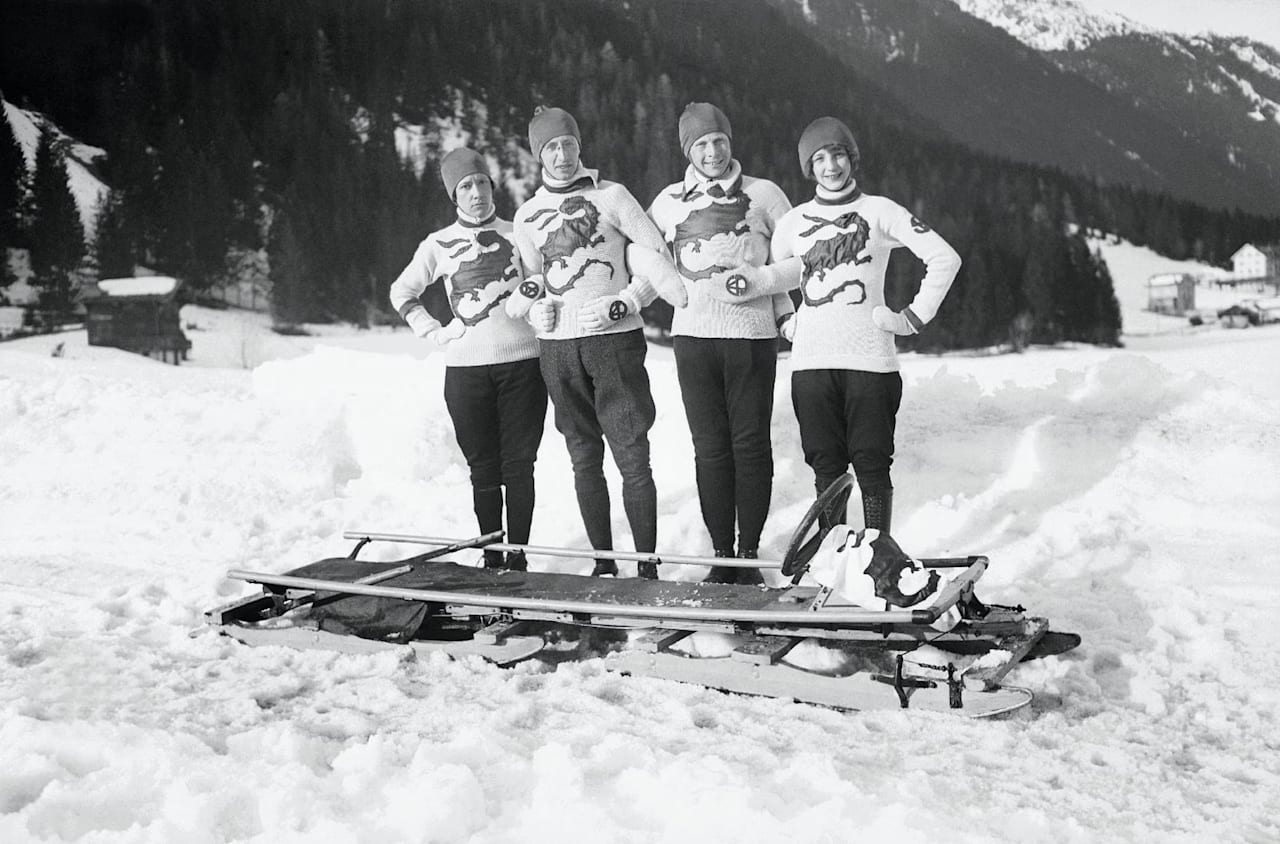
Since 1924, more than half of the National Olympic Committees (NOCs) currently recognised by the IOC have sent athletes to compete at the Olympic Winter Games. Today, the Games attract up to 3,000 athletes, coming together in peaceful competition.


Over the next few days, we will be looking into the legacies created by Chamonix 1924 and the various Olympic Winter Games editions since; tracking their evolution; and thinking about what their future might look like.


Olympic Review celebrates 100 years of the Olympic Winter Games and looks to the future
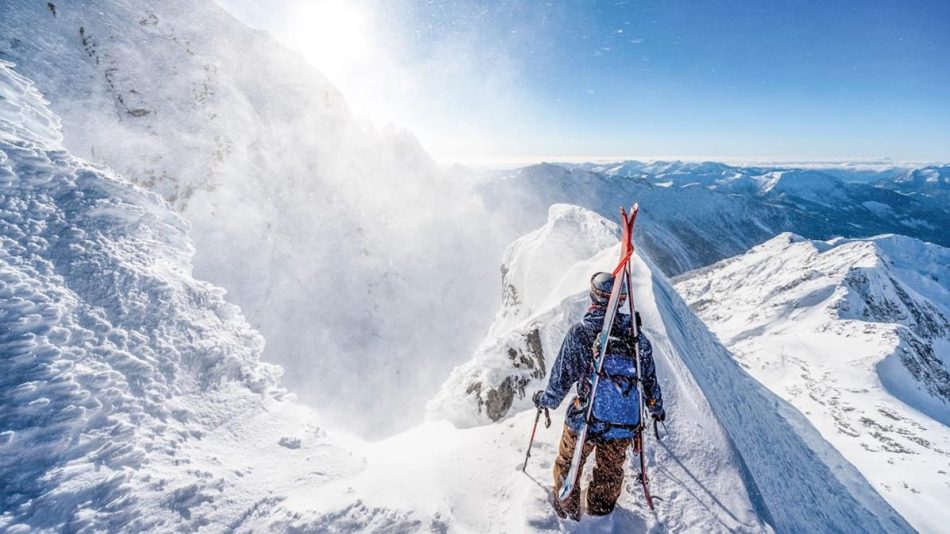

14 December 2023 – As the northern hemisphere enters the winter season, the latest edition of the Olympic Review, the official publication of the Olympic Movement, celebrates the centenary of the Olympic Winter Games that took place in Chamonix, France in 1924. It also looks at what the future holds for the Winter Olympics and the measures being put in place by the IOC to ensure that they can continue to survive and thrive for a long time to come.
Featuring articles by contributors from outside the Olympic Movement, the magazine looks back at the rich and storied history of 10 decades of the world’s greatest festival on snow and ice.
In this edition:
- Writer James Calder retraces the Olympic Winter Games from their birth in Chamonix in 1924 to the present day looking, among others, at progress towards gender equality and how different editions have shaped their host cities and regions.
- Norwegian winter sports legend Aksel Lund Svindal reflects on his Olympic experiences and explains how, in his view, the Olympic Games can inspire future generations.
- Journalist Brian Pinelli talks to and about some of the iconic stars of winter sport who left indelible marks on the Olympic Winter Games, including ice skater Katarina Witt and Alpine skier Franz Klammer, as well as Federica Brignone as she looks forward to Milano Cortina 2026.
At the same time as celebrating the past, Olympic Review also looks towards the future.
- In a feature entitled “The Heat is On”, Steve Wilson looks at what the future holds for the Olympic Winter Games and the measures that the IOC is taking to protect the Winter Olympics and winter sport in general from the challenge of climate change.
- IOC Athletes’ Commission member and Oluseyi “Seyi” Smith, who has participated in the summer and winter editions of the Olympic Games discusses measures that, in his view, the wider sporting sector could take to become more sustainable.
- Athletes from some nations without an obvious winter sports tradition describe the innovative approaches they have adopted in order to shine on the Olympic Winter stage. Could some of these ideas hold the key to the future?
These and other features can be read in Olympic Review 121, which is available here.
The oldest regular publication of the International Olympic Committee, the Olympic Review is the official magazine of the Olympic Movement. Published twice a year in English, French and Spanish, its content is a mix of official news, opinion pieces and more in-depth features on topics of interest to the sporting movement. You can find all previous editions of the Olympic Review in the Olympic World Library.
100 years of the Olympic Winter Games: celebrating mountain magic while looking to the future
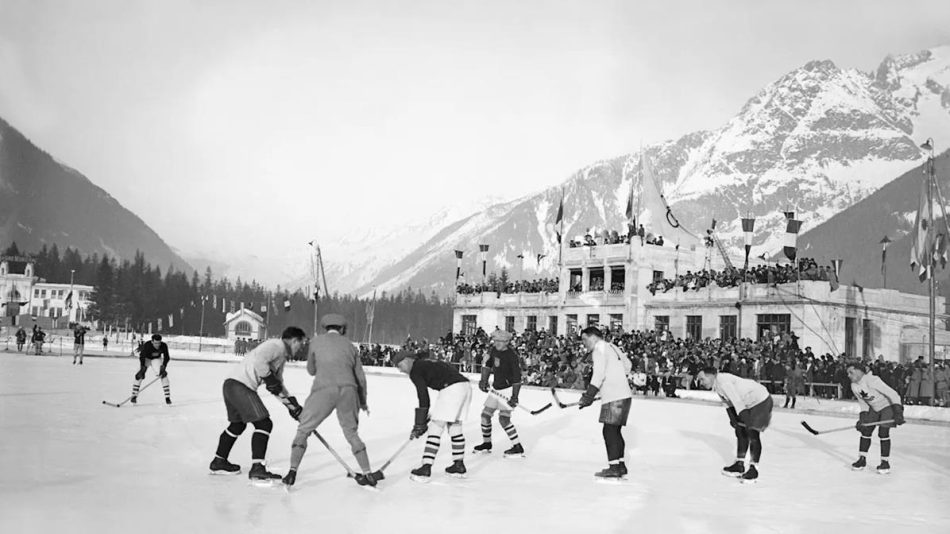

4 January 2024 – The Olympic Winter Games are turning 100 years tomorrow, marking a revolutionary century of mountain sports driven by technological leaps and social progress. As we celebrate 100 years of sport on snow and ice, we look ahead to see how the Games can adapt to the challenges ahead.
In 1924, 258 athletes from 16 national teams came together in the small Alpine town of Chamonix, France, for what later became the first ever Olympic Winter Games. Since then, the Games have evolved to become the world’s most important winter sports event. Today, up to 3,000 athletes from over 90 National Olympic Committees take part in a growing number of disciplines, including the latest additions, such as freestyle skiing and ski mountaineering.
“Although Chamonix 1924 was only officially designated ‘Olympic’ by the IOC in 1926, it was nonetheless a key moment in the history of Olympism and the Olympic Games,” said International Olympic Committee President Thomas Bach. “And with the exception of two editions, the event has been a permanent fixture on the Olympic calendar for a century, garnering huge excitement every time, with winter sport on snow and ice continuing to fascinate.”
https://youtube.com/watch?v=ZFtG72HhKlE%3Frel%3D0%26enablejsapi%3D1%26origin%3Dhttps%253A%252F%252Fwww.thenewsmarket.com
Including this first edition, held in Chamonix from 25 January to 5 February 1924, 24 editions of the Games have been hosted by 21 regions and 13 countries. Of the 258 athletes in Chamonix, just 13 were women. Nearly a century later, Beijing 2022 welcomed 2,871 athletes, 45 per cent of them women – a ratio which is expected to grow to 47 per cent at Milano Cortina 2026.
Originally based on sports practices from Europe that were accessible to few people, the Games have helped to introduce winter sports to wider audiences, for professionals and amateurs alike.
They have also propelled their hosts onto the global map of world-class resorts and destinations – offering a wide range of winter but also warm-weather activities.
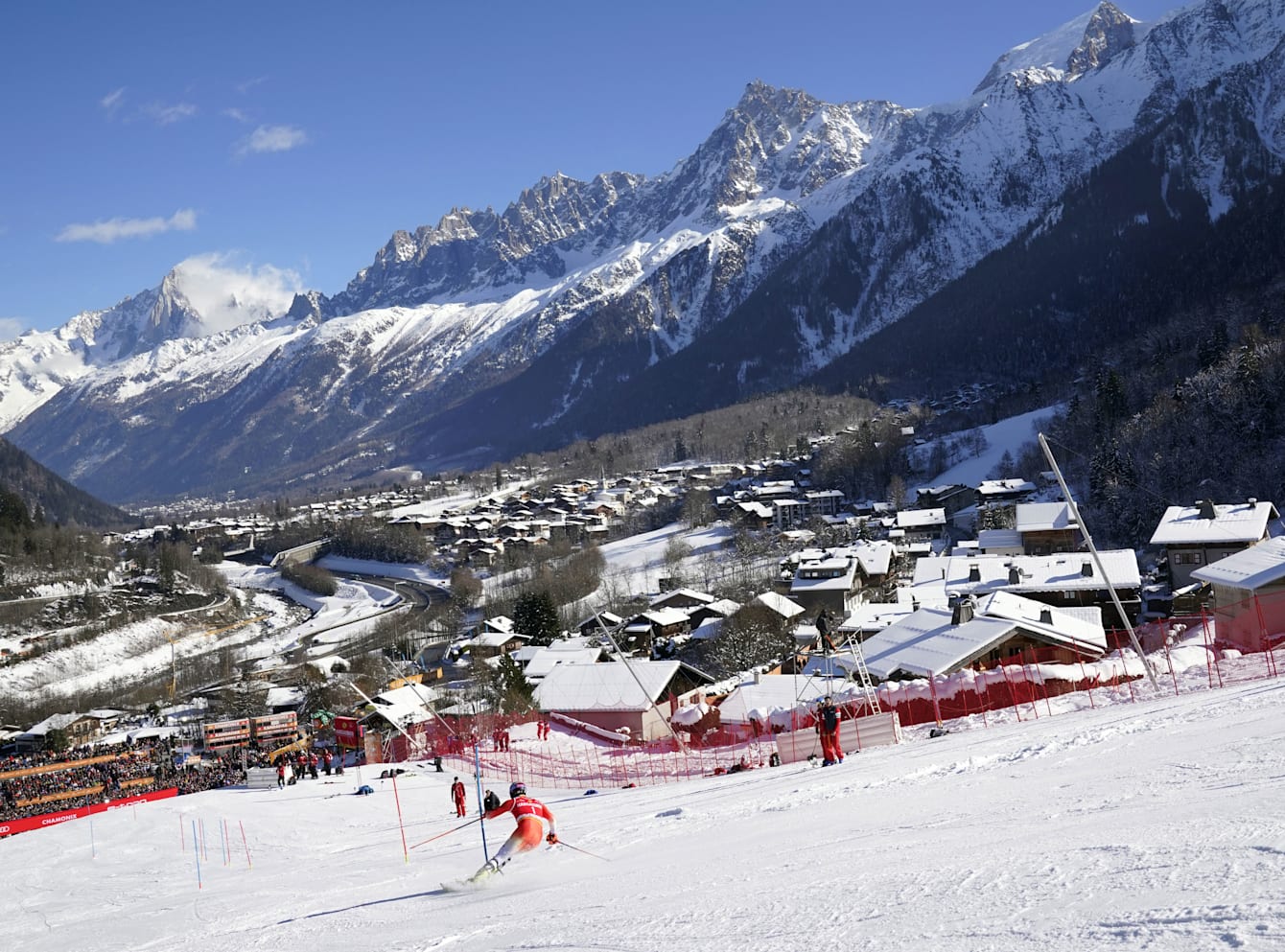
Host benefits
The Olympic Winter Games continue to uplift mountain regions, which seize the opportunity to raise their visibility on a global scale. Following the Games, Chamonix experienced a national and international reputational boost, resulting in steadily rising visitor numbers. The town today hosts over 8 million overnight visitors each year, spread equally between the winter and summer seasons.
Over the century, lesser-known mountain regions worldwide have leveraged the Games’ momentum to create lasting tourism infrastructure, sustainable transport options, entertainment events and sports facilities, enjoyed throughout all four seasons.
From Sapporo to Innsbruck, Olympic hosts have expanded their tourism portfolios to include not only sports but also cultural attractions, adding temporary and permanent jobs to local economies in sectors such as hospitality, construction, security and event management.

Sapporo 1972, for example, accelerated economic growth, contributing to the increase in the income of Sapporo citizens by 3.2 per cent each year between 1967 and 1972. And in Tirol, in 2021, the tourism industry directly and indirectly employed 60,000 people, generating around EUR 8.4 billion.
Aside from economic benefits, the Olympic Winter Games have created a ripple effect by inspiring individuals, communities and entire regions to embrace a healthier lifestyle, engage in mountain sports, and reap the physical and mental benefits of sporting activities.
The most recent Olympic Winter Games, Beijing 2022, are an example of how residents, including urban dwellers, embraced winter sports thanks to the Games. An estimated 350 million Chinese people engaged in winter sports in the run-up to and following the Games. By the end of 2025, approximately 5,000 schools across the country are set to include winter sports in their curriculum.
Winter sport will need to adapt to the impacts of climate change and mitigate their effects.
Thomas Bach, IOC President
The future
However, with the evolution came an increasing recognition of the fragility of the environment on which winter sports depend. Today, climate change poses a direct threat to people and their livelihoods and particularly jeopardises sports that rely on snow and cold weather.
Over the years, Games organisers have used the event to raise awareness about the mountain environment and the importance of its conservation. Dubbed the first “green” Games, Lillehammer 1994 set concrete sustainability goals for the planning and delivery of the Games. Over time, with Olympic Agenda 2020 and Olympic Agenda 2020+5, the IOC has strengthened sustainability requirements for the Games.
“As with all sectors, winter sport will need to adapt to the impacts of climate change and mitigate their effects,” said President Bach. “This thinking was very much at the forefront when we adopted Olympic Agenda 2020 and Olympic Agenda 2020+5, inspired by the mantra of ‘change or be changed’. The IOC and the Olympic Movement are seeking to reduce our impact on the environment, not only to contribute to the greater good of society, but also so that sport, and notably winter sport, can continue to contribute towards creating a better world.”
Today, all potential hosts must demonstrate climate-responsible projects. From 2030, Games organisers will be obligated to minimise their emissions, strive to remove more carbon than the Games emit, and encourage others to take climate action.
With 89 per cent of all the permanent venues used at previous Olympic Winter Games still in use, the IOC demands that nothing is built only for the Games. Organisers must prioritise existing and temporary venues. If any new infrastructure is built, it must respond to the long-term needs of the local people, ensuring year-round use. Today, events can be hosted outside the main hosting region and even outside the host country.
For the last hundred years, people have been speaking about the magic of the Games. Our duty and responsibility is to ensure that this is the same in the next hundred years.
Christophe Dubi, Olympic Games Executive Director
With temperatures continuing to rise across the globe, by 2040 only 10 to 13 nations may be able to host the Olympic and Paralympic Winter Games. This is one of the reasons why the IOC approved the principle of a double award of two successive Olympic Winter Games – the 2030 and 2034 editions – if the appropriate conditions exist. This would provide security for the athletes and the Olympic Movement, to allow the IOC to investigate strategies to ensure the future of winter sport. These could include: the notion of rotating the Olympic Winter Games within a pool of climate-reliable hosts; innovations and new technologies; co-hosting ice and snow events between different regions; and decentralising the organisation of the Olympic Winter Games to outsource certain competitions to experienced international and national event organisers.
“For the last hundred years, people have been speaking about the magic of the Games. Our duty and responsibility is to ensure that this is the same in the next hundred years,” said Christophe Dubi, the IOC Olympic Games Executive Director. “Society at large, and athletes in particular, are calling for activities – sports, events and the Olympic Games – to be socially, economically and environmentally responsible. We are responding to these calls.”

